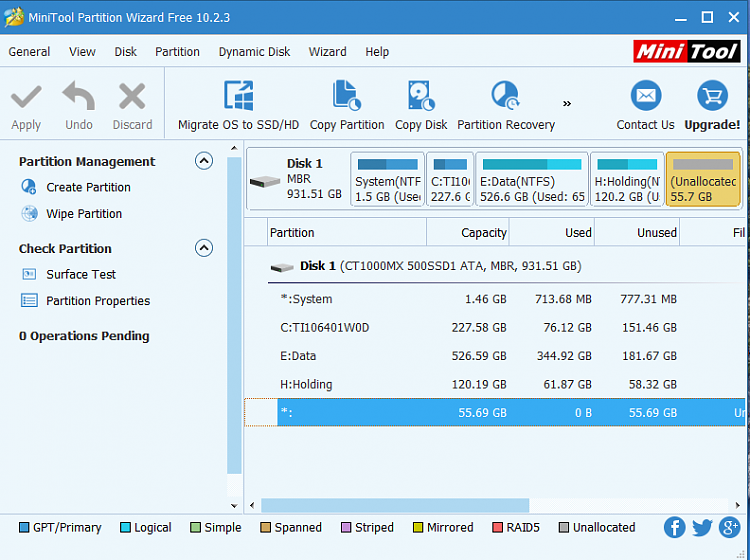New
#1
New SSD optimization and leaving free space at end
I just installed a new 1000GB ssd in my laptop (only drive) and it's working great. I am guessing this is where I should ask questions about optimization.
Based on what I read on the web I have
- Disabled indexing on all drives
- disabled hibernate (powercfg -h off)
- checked that trim is enabled
- SATA controller is in AHCI mode in Device manager
- disabled superfetch
I hope that is all OK. But I have some questions.
- I was advised to modify my paging file. So I set it at a minimum of 400MB and max of 600MB. Is that reasonable?
- I read that I should leave some free space at the end of the SSD. But the entire drive was formatted when I cloned my previous drive. So, using the mini-tool I created a unallocated partition at the end of the drive, but it is formatted. Is that OK? Should it be unformatted and if so how do I unformat it?
- Should I leave "optimization" on a weekly basis?
Anything else I should do?
Thanks.



 Quote
Quote